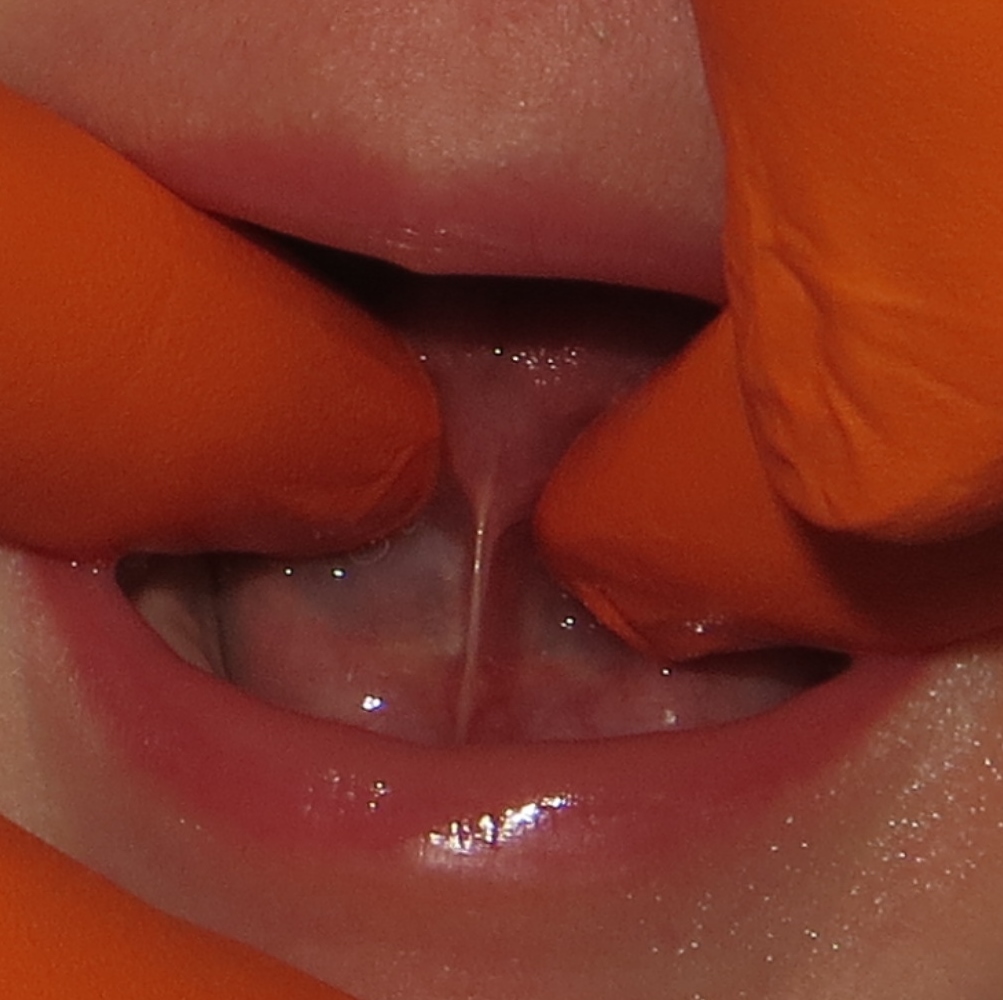Tongue Tie / Lip Tie
Diagnosis
You may have been told that your newborn son or daughter has a lip and/or tongue tie. These ties can be very problematic for infants and children. In infants, these ties can make breastfeeding very difficult and painful. In children, these ties can lead to problems speaking and swallowing, as well as dental and orthodontic issues. It is very important to get your child evaluated by someone who is knowledgeable and appropriately trained in the diagnosis and treatment of tongue and lip tie.
Lip Tie

This same issue can occur with bottle-feeding. If the frenum attaches close to the ridge or into the palate a future diastema (gap between the teeth) can also occur.
Tongue Tie

Long term a tongue tie can result in speech problems, facial growth problems and/or issues later in life with transferring food around the mouth for chewing.
Symptoms
Some babies can have ties and not be symptomatic. To know if the ties are a problem we ask two major questions: “Is the baby getting enough to eat?” and “Is nursing comfortable for the mother?” Symptoms can be as follows:
For Babies
- Poor latch
- Slides off nipple or falls asleep while attempting to latch
- Colic symptoms
- Reflux symptoms
- Poor weight gain
- Continuous feedings
- Gumming or chewing of the nipple
- Unable to take a pacifier or bottle
For Moms
- Creased, cracked, bruised or blistered nipples
- Bleeding nipples
- Incomplete breast drainage
- Infected nipples or breasts
- Plugged ducts
- Mastitis (inflammation of the breast)
Treatment
Frenectomy Procedure

The laser procedure takes slightly longer than a clipping procedure (commonly referred to as a frenotomy) but is the preferred method of our doctors due to the minimal bleeding and lower probability of healing back together. This procedure can often times be done in the office without the need for sedation or general anesthesia.

The parents are escorted to the waiting room for the short procedure. Then the laser procedure is completed. The parents are brought back immediately after treatment is completed and mom is encouraged to nurse (if still breastfeeding). Babies will cry during the procedure even if they are numb in the area. They calm quickly after the procedure is complete and they are out of the swaddle.
Post-Op Instructions
Instructions following Surgery
1. You may breast feed or bottle feed your baby immediately following surgery
2. Your baby may use a pacifier immediately following surgery
3. The surgical site(s) will look reddish, brownish, black the day of the procedure. These will heal into soft white scabs (sometimes with a yellow or greenish tinge). And eventually everything will heal into a nice pink color typically around 2 weeks after the procedure.
4. Post op discomfort generally sets in 5-7 hours after the procedure. For the first 2-3 days following surgery, you may use over the counter Tylenol or any homeopathic remedy that you feel comfortable with (Highland's teething gel, Arnica, Lavender Essential Oil, etc)
5. You may use Vitamin E oil on the surgical site(s) in the morning and at bedtime.
6. Begin stretching exercises the day after surgery.
Lip Exercise: Gently lift the lip toward the nose as high as it will go and hold there for 3 seconds. Repeat 3 times per day for 2 weeks.
Tongue Exercise: Rub your index finger back and forth across the floor of the mouth 3-5 times. Place your index fingers underneath the tongue and raise the tongue up and back towards the back of the throat as far as it will go and hold for 3 seconds. Make sure to push your fingers into the diamond shaped surgical wound.
***It is OKAY to see a little bleeding from the surgical site while doing stretches***
7. Common post-operative healing consequences include: generalized "fussiness" for 1-2 days, swelling of the lip, low grade fever, slight bleeding of the surgical are for 1 or 2 days.
8. An optional visit to the office in 1 week for a post treatment evaluation could be arranged should any new problems arise.

